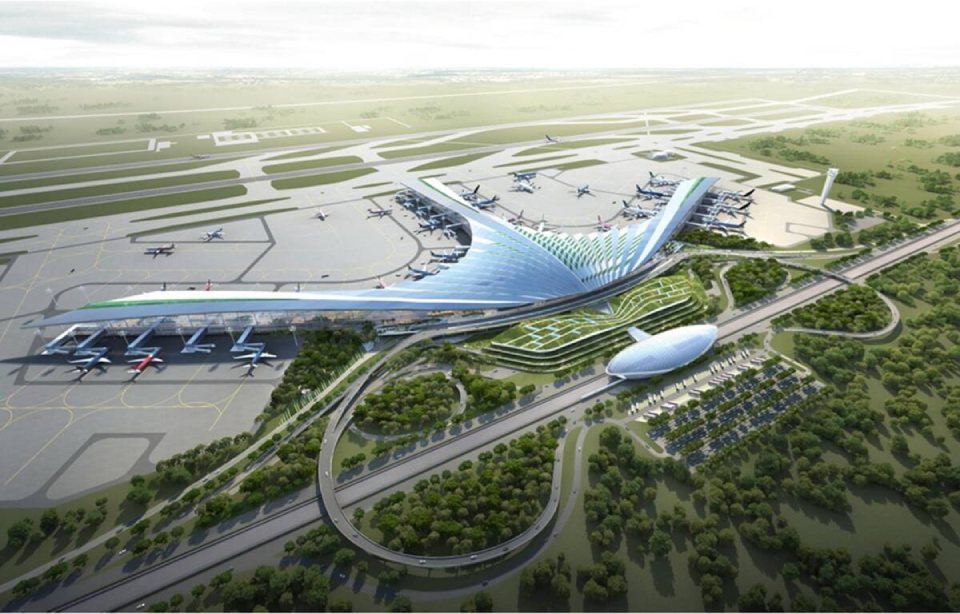
In 2024, Viet Nam’s GDP growth reached 7.09 % - a high rate in the region and the world; the macro-economy was stable; inflation was controlled below 4%; major balances were ensured. The GDP scale was estimated at 11,511.9 trillion VND, equivalent to 476.3 billion USD - an increase of nearly 100 times compared to 1986, ranking 4th in Southeast Asia and 34th in the world.
Regarding the economic structure in 2024, the agriculture, forestry and fishery sector accounted for 11.86%; the industry and construction sector accounted for 37.64%; the service sector accounted for 42.36%; taxes less subsidies on products accounted for 8.14%.
In 2024, Viet Nam’s import-export turnover of goods reached 786.29 billion USD, up 15.4% compared to the previous year. In particular, the export turnover rose 14.3% year-on-year to 405.53 billion USD while the import value increased by 16.7% to 380.76 billion USD. Viet Nam’s trade balance of goods in 2024 remained a high trade surplus, reaching 24.77 billion USD thanks to stable export growth and minimizing imports of non-essential goods. This is the 9th consecutive year that Viet Nam’s trade balance of goods has a trade surplus. Asia region (including China, Japan, and South Korea) is still the largest market of Vietnamese goods. Besides, the US and EU are also important markets, especially in term of exporting agricultural products, textiles, footwear, and electronics.
In 2024, Viet Nam’s total registered FDI (including newly registered capital, adjusted registered capital, capital contribution and share purchase of foreign investors) reached 38.23 billion USD, ranking in the group of 15 developing countries with the largest FDI in the world. Realized FDI capital was estimated at 25.35 billion USD - the highest level ever. The newly approved FDI in the processing and manufacturing industry was the largest with registered capital reaching 13.44 billion USD, accounting for 68.1% of the total newly registered capital. FDI in real estate business reached 3.72 billion USD, accounting for 18.8%; FDI in the remaining industries reached 2.57 billion USD, accounting for 13.1%. Among the 80 countries and territories with newly licensed investment projects in Viet Nam, Singapore was the largest investor with 6.26 billion USD, accounting for 31.7% of the total newly registered capital. Meanwhile, South Korea and China ranked the second and third with 2.89 billion USD and 2.84 billion USD, accounting for 14.6% and 14.4% of the total newly registered capital, respectively .
China has become one of Viet Nam's largest international tourist markets with over 5.8 million visitors in 2019, accounting for 30% of Viet Nam's total international tourists. After the Covid-19 pandemic, tourism cooperation between the two countries quickly resumed. In the first quarter of 2025, there were nearly 1.6 million Chinese tourists visiting Viet Nam, and it is expected to exceed 6 million people for the whole year of 2025. Viet Nam is also one of the top five inbound source of tourists in China.
The goals of Viet Nam's tourism industry are: By 2030, the tourism industry will become one of the key industries of the country, guided by the principles of "special products - professional services - convenient and simple procedures - competitive prices - clean and beautiful environment - safe, civilized and friendly destinations". Our goal is to receive 22 to 23 million international tourists and serve 120-130 million domestic tourists by 2025. By 2030, our goal is to receive 35 million international tourists and provide services for 160 million domestic tourists, with the tourism industry accounting for 13-14% of GDP growth. In order to achieve the above goals, the Vietnamese government has released the "Viet Nam Tourism Development Strategy until 2030" and implemented comprehensive measures.